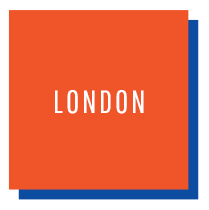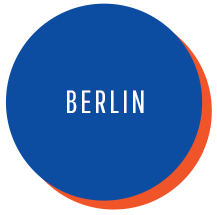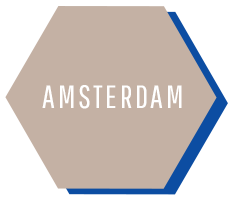ENGELBECKEN IN BERLIN KREUZBERG
by Susanne Lanwerd
Engelbecken is unique, not only as a historical landscape but also as an urban one. Located in the district of Kreuzberg, it forms the pivotal point of the Berlin setting. Engelbecken’s history, which is more than 200 years old, tells of people, migration and materiality. It’s an impressive demonstration of how the public sphere has been transformed by religious and migration-related practices.
The exhibition focuses on three socio-religious meeting places and sacred buildings that surround Engelbecken: the Alevi Centre, the Church of St. Michael, built in 1861, and a second St. Michael's Church, built in 1964.
References dating back from the 13th century up to the present day show that the key influences on Berlin’s religious history are the Jewish, Christian and Muslim religions. Several smaller religious communities of various origin can also be found here.
In the second half of the 19th century, many Catholics immigrated to Berlin, for whom - as a minority in Protestant Prussia – sacred buildings were scarce. Polish and Silesian citizens were employed as migrant workers to carry out the construction of Engelbecken. Around this time, soldiers were recruited for the Prussian army. St. Michael’s was built as a Garrison church, and since the damage caused to it during the Second World War, it has been preserved as a church ruin.
Today, it’s the empty and/or converted urban areas surrounding Engelbecken, which bear testimony to the murderous National Socialist politics; in the 1930s and 1940s, the National Socialists destroyed countless synagogues, as well as much other evidence of Berlin Jewish life in Berlin.
Since the 1960s, Berlin Kreuzberg has been considered the "third largest Turkish city", with approximately 40% of its population consisting of Turkish Germans. This includes the Alevis, who, since 1999, have been using a former New Apostolic Church as a Cemevi for the Alevi community.
From 1961 to 1989, Engelbecken also formed a dramatic arena for the division between East and West, with the Berlin Wall running through its centre for almost thirty years. The wall split the St. Michael’s Church parish into eastern and western parts; soon afterwards, the new St. Michael’s church was erected for the people on the western side of the wall.
Engelbecken’s rich history reflects on the city of Berlin as a whole. The exhibition also focuses on two other places that are just beginning to emerge: firstly, the Buddhist Gate, whose rituals and events are held in the grounds of a former hospital, and secondly, the proposed "House of One", whose plans include places of worship for the Jewish, Christian and Muslim religions, as part of its intention to make 700 years of urban history visible once more.


